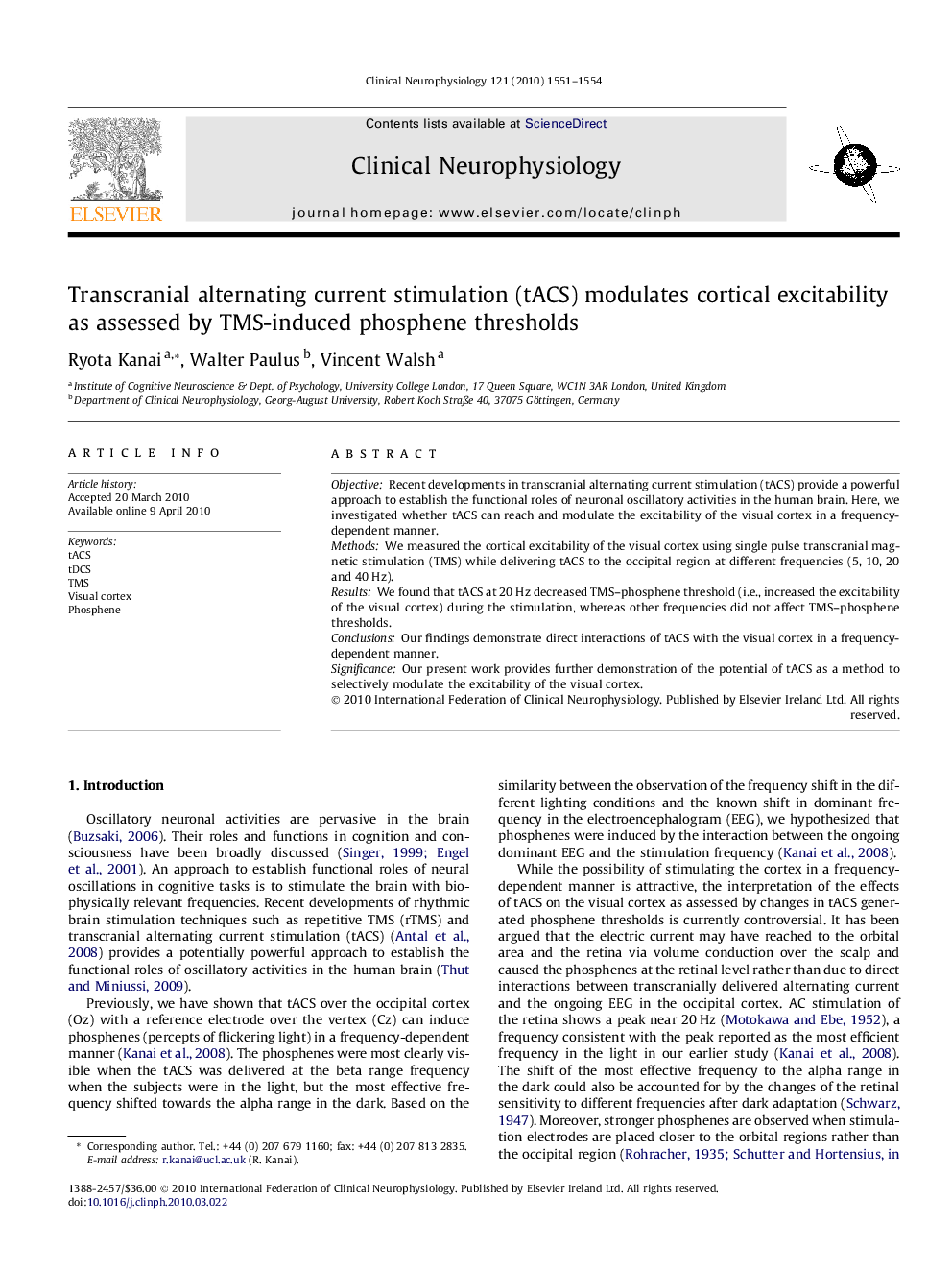| Article ID | Journal | Published Year | Pages | File Type |
|---|---|---|---|---|
| 3045601 | Clinical Neurophysiology | 2010 | 4 Pages |
ObjectiveRecent developments in transcranial alternating current stimulation (tACS) provide a powerful approach to establish the functional roles of neuronal oscillatory activities in the human brain. Here, we investigated whether tACS can reach and modulate the excitability of the visual cortex in a frequency-dependent manner.MethodsWe measured the cortical excitability of the visual cortex using single pulse transcranial magnetic stimulation (TMS) while delivering tACS to the occipital region at different frequencies (5, 10, 20 and 40 Hz).ResultsWe found that tACS at 20 Hz decreased TMS–phosphene threshold (i.e., increased the excitability of the visual cortex) during the stimulation, whereas other frequencies did not affect TMS–phosphene thresholds.ConclusionsOur findings demonstrate direct interactions of tACS with the visual cortex in a frequency-dependent manner.SignificanceOur present work provides further demonstration of the potential of tACS as a method to selectively modulate the excitability of the visual cortex.
